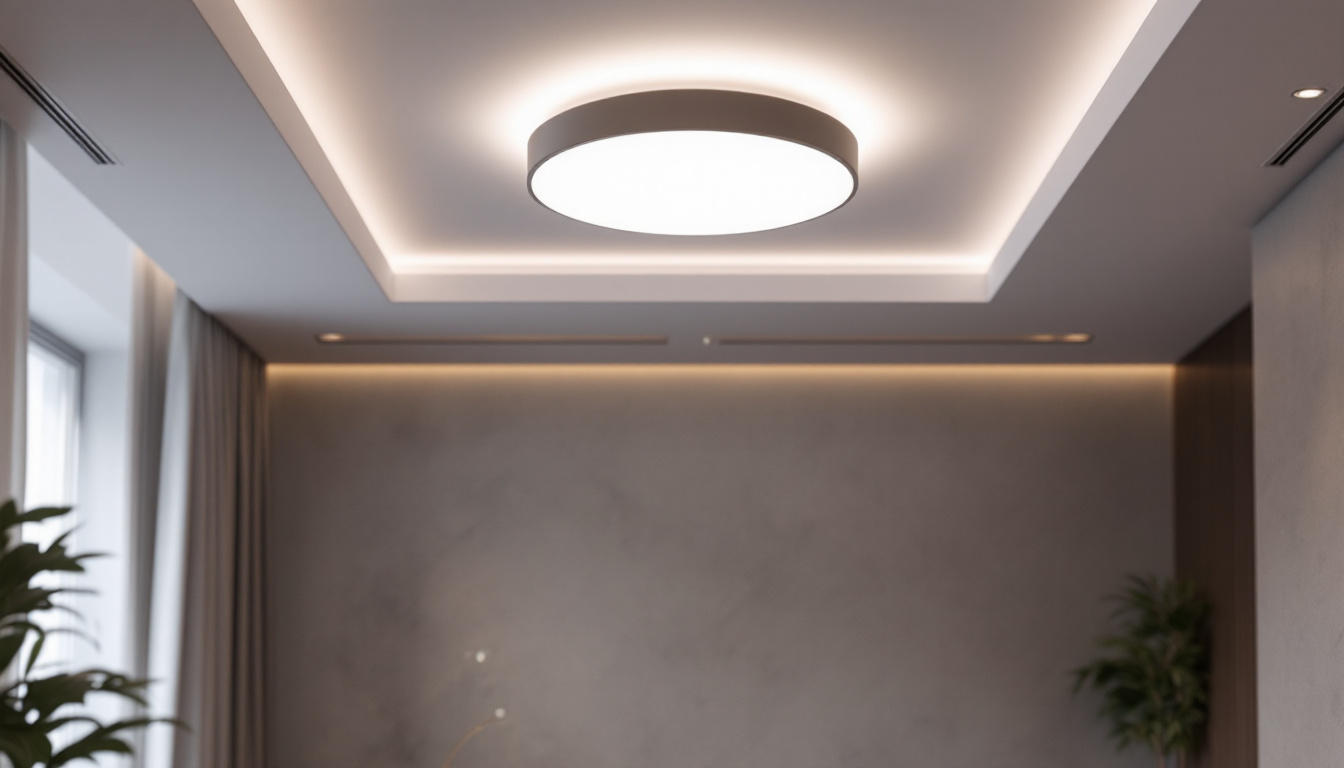
In the realm of modern lighting solutions, commercial LED lights have emerged as a transformative force. Their efficiency, longevity, and versatility have made them a preferred choice for various applications, ranging from office spaces to retail environments. This article delves into the significance of commercial LED lights, exploring their benefits, applications, and the future of lighting technology.
Lighting technology has undergone significant changes over the decades, transitioning from incandescent bulbs to fluorescent lights, and now to LEDs. Each evolution has brought about improvements in energy efficiency and longevity, but the advent of LED technology stands out for its remarkable impact on commercial lighting.
LEDs, or Light Emitting Diodes, utilize a semiconductor to convert electricity into light, resulting in a much lower energy consumption compared to traditional lighting solutions. This shift not only reduces operational costs but also aligns with the growing demand for sustainable practices in various industries. The versatility of LED technology has also led to innovative applications, ranging from architectural lighting to smart home systems, showcasing its adaptability in various contexts.
One of the primary advantages of commercial LED lights is their energy efficiency. LEDs consume significantly less power than incandescent or fluorescent bulbs, often using up to 75% less energy. This reduction in energy use translates to lower electricity bills, making LEDs an economically sound investment for businesses. Additionally, the ability to adjust the brightness and color temperature of LEDs allows for customizable lighting solutions that can enhance the ambiance of a space, catering to both aesthetic and functional needs.
Moreover, the longevity of LED lights is another compelling benefit. With lifespans that can exceed 25,000 hours, LEDs require less frequent replacements, reducing maintenance costs and downtime. This durability is particularly advantageous for commercial settings where lighting is crucial for operations. The rapid advancements in LED technology have also led to the development of smart LEDs that can be integrated into building management systems, allowing for real-time monitoring and optimization of energy use, further enhancing operational efficiency.
In addition to their economic advantages, commercial LED lights contribute positively to environmental sustainability. Their lower energy consumption results in a reduced carbon footprint, aligning with global efforts to combat climate change. Furthermore, LEDs do not contain hazardous materials like mercury, which is present in many traditional lighting options, making them a safer choice for both people and the planet. The shift towards LED lighting also promotes the use of renewable energy sources, as the reduced demand for electricity can lead to a decrease in fossil fuel consumption.
As businesses increasingly prioritize sustainability, the adoption of LED lighting solutions becomes a strategic move that not only enhances operational efficiency but also bolsters corporate social responsibility initiatives. The growing trend of retrofitting existing lighting systems with LED technology is a testament to this shift, as organizations seek to modernize their facilities while minimizing their environmental impact. Furthermore, governments and regulatory bodies are beginning to incentivize the transition to LED lighting through rebates and tax credits, further encouraging businesses to embrace this forward-thinking technology.
The versatility of commercial LED lights allows them to be utilized in a wide array of settings. From retail stores to warehouses, their adaptability makes them suitable for various applications, each benefiting from the unique properties of LED technology.
In retail spaces, lighting plays a critical role in creating an inviting atmosphere and highlighting products. Commercial LED lights can be strategically placed to enhance visual merchandising, drawing attention to key items while providing a warm and welcoming ambiance. Their ability to produce high-quality light with excellent color rendering makes them ideal for showcasing products in the best possible light.
Moreover, the flexibility of LED fixtures allows for easy adjustments and reconfigurations, enabling retailers to adapt their lighting schemes as needed. This adaptability is essential in a fast-paced retail environment where trends and displays frequently change. Retailers can also utilize LED technology to create dynamic lighting effects, such as color-changing displays during seasonal promotions or special events, further engaging customers and enhancing the shopping experience.
In office settings, proper lighting is essential for productivity and employee well-being. Commercial LED lights offer a range of options, from task lighting to ambient illumination, ensuring that workspaces are both functional and comfortable. The ability to dim LED lights or adjust their color temperature allows for a customizable lighting experience that can enhance focus and reduce eye strain.
Additionally, the energy efficiency of LED lighting contributes to lower operational costs, making it an attractive option for businesses looking to improve their bottom line while fostering a positive work environment. Many companies are now incorporating biophilic design principles, using LED lighting to mimic natural light patterns, which can boost employee morale and overall job satisfaction. This approach not only promotes a healthier workspace but also aligns with sustainability goals, as businesses strive to minimize their environmental impact.
In industrial settings, the durability and robustness of commercial LED lights are particularly valuable. These environments often require lighting solutions that can withstand harsh conditions, including extreme temperatures and exposure to dust and moisture. LED lights are designed to be resilient, making them suitable for warehouses, manufacturing plants, and outdoor facilities.
Furthermore, the ability to integrate LED lighting with smart technology enhances operational efficiency. For instance, motion sensors can be employed to ensure that lights are only activated when needed, further reducing energy consumption and costs. This smart integration can also include remote monitoring systems that allow facility managers to track energy usage and maintenance needs in real-time, ensuring that lighting systems are always operating at peak efficiency. As industries continue to embrace automation and smart technologies, the role of LED lighting in optimizing workflows and enhancing safety will become increasingly significant.
The future of commercial LED lighting is bright, with ongoing innovations and advancements that promise to further enhance their capabilities. As technology continues to evolve, the integration of smart lighting solutions is becoming increasingly prevalent.
Smart LED systems allow for greater control over lighting environments through automation and remote management. This technology enables businesses to monitor energy usage, adjust lighting levels, and even program lighting schedules to optimize efficiency. Such advancements not only improve user experience but also contribute to significant energy savings.
The Internet of Things (IoT) is revolutionizing various industries, and lighting is no exception. The integration of LED lights with IoT technology allows for real-time data collection and analysis, providing valuable insights into energy consumption patterns and lighting performance. This data can inform decisions regarding energy management and operational efficiency.
For lighting contractors, understanding the implications of IoT integration is crucial. As businesses seek to adopt smarter lighting solutions, contractors must be equipped to provide expertise in the installation and maintenance of these advanced systems.
Design innovation is another area where commercial LED lights are making strides. With advancements in technology, LED fixtures are becoming more aesthetically pleasing and versatile. Designers are exploring new forms, colors, and styles, allowing businesses to enhance their branding through lighting.
Moreover, the introduction of tunable white and color-changing LEDs offers businesses the ability to create dynamic environments that can adapt to different occasions or moods. This flexibility is particularly beneficial in hospitality and entertainment sectors, where ambiance plays a crucial role in customer experience.
While the advantages of commercial LED lights are compelling, there are challenges and considerations that lighting contractors must address. One such challenge is the initial investment cost. Although LED lighting can lead to significant long-term savings, the upfront costs may deter some businesses from making the switch.
Contractors can play a pivotal role in alleviating these concerns by providing comprehensive cost-benefit analyses and highlighting the potential return on investment. Educating clients about available incentives, rebates, or financing options can also facilitate the transition to LED lighting.
Another consideration is the variability in quality and performance among different LED products. Not all LEDs are created equal, and the market is flooded with options that vary in terms of brightness, color accuracy, and lifespan. Contractors must ensure that they are sourcing high-quality products that meet industry standards to deliver reliable and effective lighting solutions.
Conducting thorough research and partnering with reputable manufacturers can help contractors navigate this landscape and provide clients with the best possible options for their specific needs.
Commercial LED lights are undeniably at the forefront of modern lighting solutions, offering a multitude of benefits that extend beyond mere illumination. Their energy efficiency, longevity, and versatility make them an ideal choice for a wide range of applications, from retail to industrial settings.
As technology continues to advance, the integration of smart lighting solutions and IoT capabilities will further enhance the role of LEDs in commercial environments. While challenges such as initial costs and product variability exist, the long-term advantages of adopting LED technology far outweigh these concerns.
For lighting contractors, staying informed about the latest trends and innovations in commercial LED lighting will be essential for meeting the evolving needs of clients. By embracing these advancements, contractors can position themselves as leaders in the lighting industry, providing sustainable and efficient solutions that contribute to a brighter future.
Ready to elevate your lighting solutions with the efficiency, longevity, and versatility of commercial LED lights? Look no further than LumenWholesale for all your lighting needs. We provide contractors with spec-grade lighting products at unbeatable wholesale prices, ensuring you get the most value for your investment. Our commitment to quality and affordability, coupled with the convenience of free shipping on bulk orders, makes us the go-to source for premium lighting without the premium price tag. Take the next step in modernizing your lighting projects by visiting Wholesale Lighting at the Best Value and discover how we can brighten your business today.

Discover essential insights into flush LED ceiling lights that every lighting contractor needs to know.

Discover expert tips and best practices for installing ceiling lights with insights from top lighting contractors.

Discover the essential guidelines for properly illuminating the American flag at night and how mastering these etiquette rules can boost the reputation and success of lighting contractors.

Discover the ultimate guide for lighting contractors on selecting the perfect Eiko 194 10 Pack bulbs.